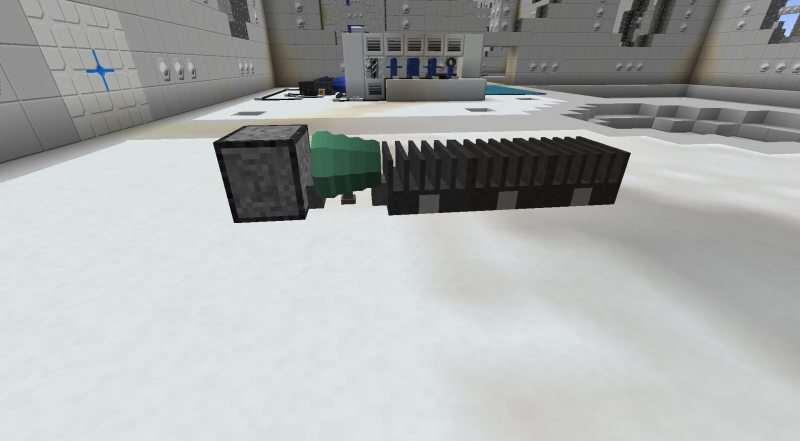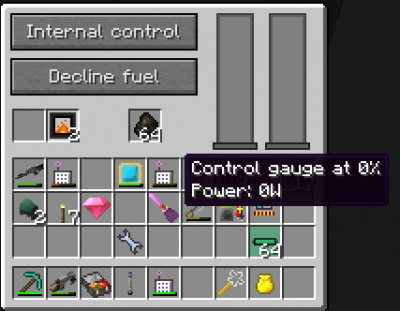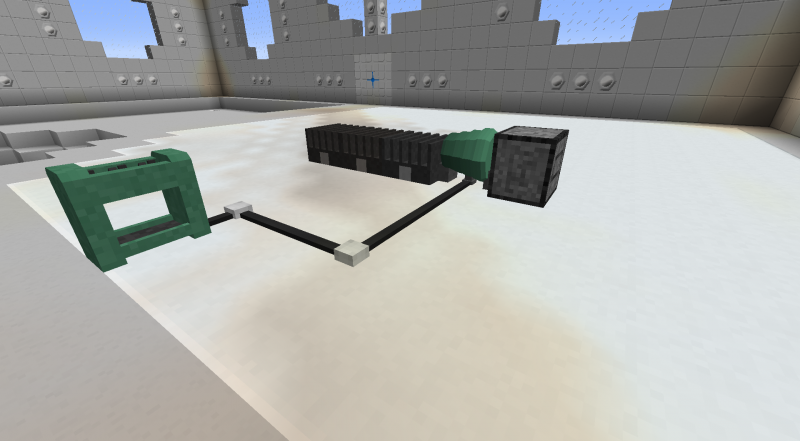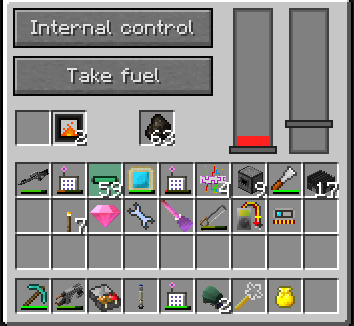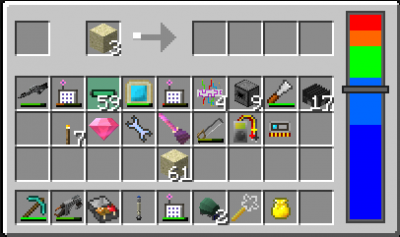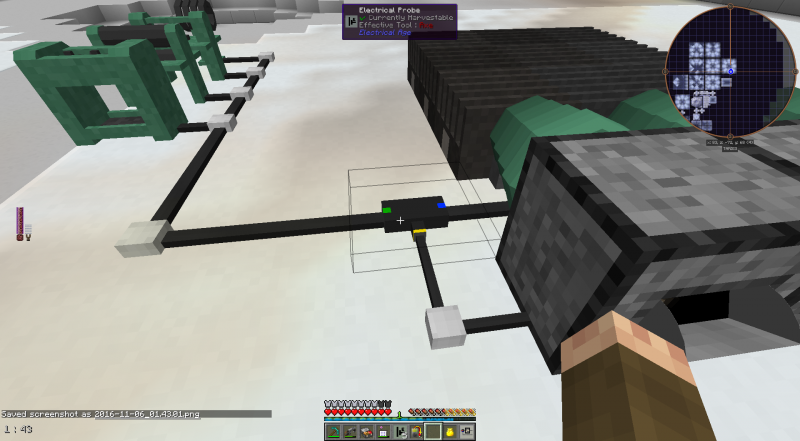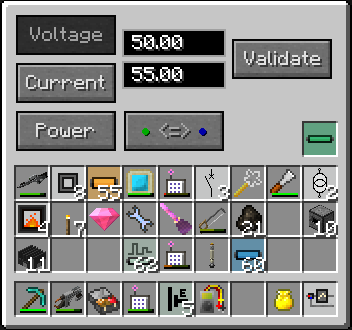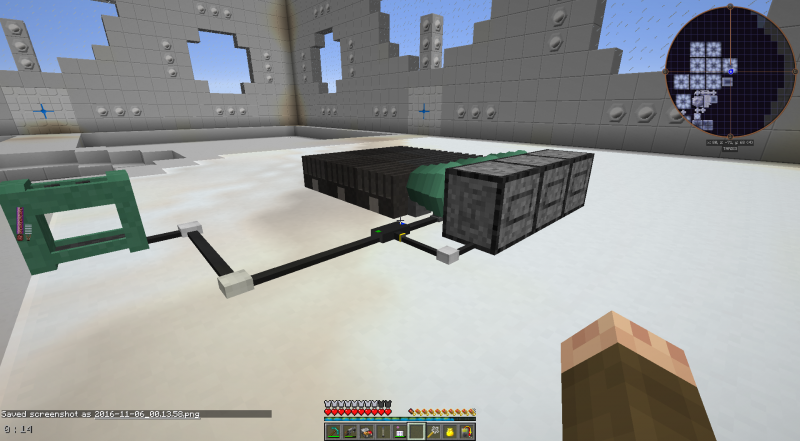Difference between revisions of "50V example build"
(the trick) |
|||
| Line 1: | Line 1: | ||
| + | == Setup== | ||
A [[50V Heat Turbine]] generates power by exploiting the temperature difference between a hot place and a cold place. | A [[50V Heat Turbine]] generates power by exploiting the temperature difference between a hot place and a cold place. | ||
We can use a [[Stone Heat Furnace]] to provide the hot side, and some [[Small Thermal Dissipater]]s for the cold side | We can use a [[Stone Heat Furnace]] to provide the hot side, and some [[Small Thermal Dissipater]]s for the cold side | ||
| Line 13: | Line 14: | ||
[[File:Example_50V_3.png|800px]] | [[File:Example_50V_3.png|800px]] | ||
| + | == Driving a macerator == | ||
Now the trick is to keep the macerator's voltage supply bar in the green, | Now the trick is to keep the macerator's voltage supply bar in the green, | ||
using the Control Gauge in the heat furnace. | using the Control Gauge in the heat furnace. | ||
| Line 18: | Line 20: | ||
If you do this by hand, that can take quite some work! | If you do this by hand, that can take quite some work! | ||
| − | [[File:Example_50V_4.png|400px]] | + | See what happens if you add some sand to the macerator. |
| − | [[File:Example_50V_5.png|400px]] | + | you'll need to adjust the heat. |
| + | Same when you remove sand. | ||
| + | |||
| + | Listen out for the sound the macerator makes. The volume and pitch | ||
| + | tell you if the macerator is running at the optimal rate. | ||
| + | |||
| + | [[File:Example_50V_4.png|400px|heat furnace]] | ||
| + | [[File:Example_50V_5.png|400px|macerator]] | ||
| + | |||
| + | == Analogic control == | ||
| + | |||
| + | Instead of controlling the temperature by hand, you can use an analogic regulator to keep it steady. | ||
[[File:Example_50V_6.png|400px]] | [[File:Example_50V_6.png|400px]] | ||
| + | |||
| + | Use the Temperature gauge to set what temperature you want. 250-300 degrees corresponds to roughly | ||
| + | 50V in our case. The Analogic regulator will use the Control gauge to try to | ||
| + | keep the temperature as close as possible to the desired temperature (called "set point"). | ||
| + | |||
| + | == External control == | ||
[[File:Example_50V_7.png|800px]] | [[File:Example_50V_7.png|800px]] | ||
[[File:Example_50V_8.png|400px]] | [[File:Example_50V_8.png|400px]] | ||
| + | |||
| + | |||
[[File:Example_50V_9.png|800px]] | [[File:Example_50V_9.png|800px]] | ||
Revision as of 03:13, 6 November 2016
Setup
A 50V Heat Turbine generates power by exploiting the temperature difference between a hot place and a cold place. We can use a Stone Heat Furnace to provide the hot side, and some Small Thermal Dissipaters for the cold side
A heat furnace can take up to 2 Combustion Chambers to improve efficiency. A heat furnace can take most solid fuels. Charcoal is a very common solid fuel, so we'll use that here.
We'll hook up a 50V Macerator using Low Voltage Cable.
Driving a macerator
Now the trick is to keep the macerator's voltage supply bar in the green, using the Control Gauge in the heat furnace.
If you do this by hand, that can take quite some work!
See what happens if you add some sand to the macerator. you'll need to adjust the heat. Same when you remove sand.
Listen out for the sound the macerator makes. The volume and pitch tell you if the macerator is running at the optimal rate.
Analogic control
Instead of controlling the temperature by hand, you can use an analogic regulator to keep it steady.
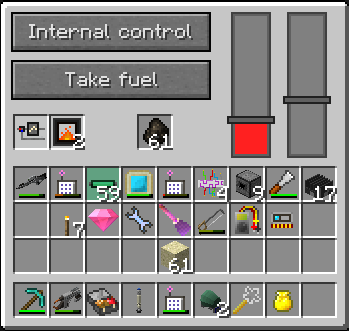
Use the Temperature gauge to set what temperature you want. 250-300 degrees corresponds to roughly 50V in our case. The Analogic regulator will use the Control gauge to try to keep the temperature as close as possible to the desired temperature (called "set point").
